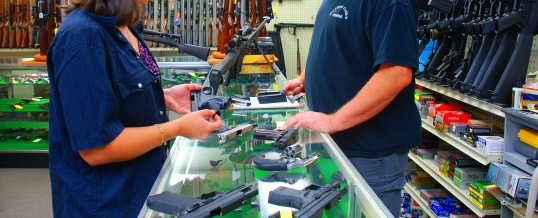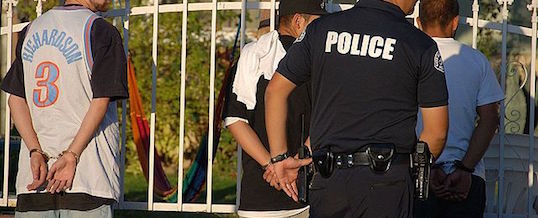
Choosing a defensive handgun: making the best of bad alternatives
An interesting question came up in a class I taught recently. It had to do with defensive carry firearm recommendations in states which restrict the models available for sale (such as in Massachusetts and California.) How is someone to pick the best of the worst options?
The attributes of an ideal defensive handgun
When picking a defensive firearm, particularly one which is to be carried for personal defense, I always recommend that the gun:
1) Be reliable above all else; the gun needs to work the first time and every time, even after sitting idle for perhaps months.
2) Fit the owner’s hand; with the gun centered on the web between the thumb and forefinger and with the muzzle running in line with the bones of the forearm, the trigger finger should contact the trigger at or next to the first (distal interphalengeal) joint. The owner should also be able to easily reach the operating controls even one-handed.
3) Be of an efficient design; without extraneous levers or buttons that need to be manipulated to either get the gun into a shooting condition directly out of the holster or to put it into a safe storage condition. It also needs to have a trigger which has a consistent action for each shot: the same length of travel and weight, preferably relatively short and easy to manipulate.
4) Be in a caliber that reaches a “floor” of effectiveness; having a history of causing rapid cessation of activity while still presenting a controllable recoil pulse. In general, this is going to be 9mm in an autoloading pistol and .38 Special in a revolver. If someone is particularly recoil sensitive the .380ACP may be considered. (This is not to say that there are smaller calibers which can’t be effective, because that’s not at all true, simply that the 9mm has a much stronger record of effectiveness than any smaller caliber and is objectively easier to control than larger calibers.)
5) Generally, and all other things being equal, more bullets are better than fewer bullets.
The ideal choice for a defensive handgun, one which fits all the criteria, will usually be a polymer-framed, striker-fired autoloading pistol in 9mm. They’re efficient, effective, reliable, and available in a wide variety of frame shapes and sizes to fit nearly anyone. It’s no wonder that these guns are the top sellers, year after year, all over the country.
What if the state in which you live doesn’t allow you to purchase the ideal gun? How to you pick the best of the worst choices?
Where choices are limited, decide what’s important
This very topic came up in class, specifically with regard to California’s handgun roster. In case you’re not familiar, the state of California has a roster of handguns which are allowed to be sold in the state. I won’t go into the details, but you can look them up if you’re so inclined. While the list boasts some 700 models available for sale, in reality the majority of those are finish/color variations. If you condense them down, there are only a few guns which are actually approved for sale — and virtually none of the most popular models in the rest of the country are available to mere citizens. As a result, the choices in optimal defensive handguns get very slim, very quickly.
The specific question was “if you have to pick from a striker-fired pistol in .40 S&W, or a double-action/single-action autoloader in 9mm, how do you make the choice?” In the first instance, the caliber isn’t ideal (it’s demonstrably harder to control than the same gun in 9mm), while in the second the gun is not an efficient choice because of the more complicated operation.
Which criteria, then, is more important — and where should we compromise?
A sequence-based decision tree
As I said at the top, reliability in a defensive gun is a non-negotiable prerequisite. Given, for instance, an unreliable striker-fired 9mm (there are such things) and a reliable gun of any other description, I’ll pick the reliable one every time. I can work around everything else, but I can’t fix “this thing doesn’t work!” In those cases where there are no really reliable autoloaders, I’d definitely pick a good revolver. (Thankfully there are still a lot of those available even in the most draconian states, and they may be the best choice!)
After culling the list to the reliable models, I’ll next find those guns which fit my hand. A large gun in 9mm which I can’t grasp (or on which I can’t reach the trigger) is going to be difficult-to-impossible for me to shoot at all. At the very least, my balance of speed and precision is going to be significantly affected; in extreme cases, there may be no precision achievable at any speed! A gun which fits my hand but is in a larger caliber might not be as easy to shoot, and I won’t be able to shoot it to any given level of precision as quickly, but at least I’ll be able to shoot the thing.
Depending on where I lived, my choices at this point might be very limited. Of any options left, I’ll pick the one that’s most efficient in use; the one that’s easiest to shoot. If I need to draw my gun against an attacker I don’t want anything to get in the way of my defense. If there are safeties I need to manipulate, there are safeties I might forget to manipulate. Changing trigger behavior means I’d need to spend that much more time on the range working with that instead of working on more important aspects of the shooting response.
If it comes down to a less efficient gun in 9mm, or a more efficient gun in a larger caliber, I’ll pick the latter. The cartridge with the higher recoil will affect primarily my shot-to-shot speed, but the reliability of the gun, how it fits my hand, and how easy it is to operate will all affect my FIRST shot — and the first shot is my best opportunity to affect my attacker’s ability to hurt me. I want to get to that first shot as quickly and easily as I can, and I want every advantage I can get in placing that first shot accurately on the threat. Subsequent shots are just that — subsequent. Everything else happens first, and therefore are more important.
There are those who will argue the point, but I believe that looking at the sequence in which a gun’s attributes affect its use is the only way to make the best of a bad situation. First things first!
– Grant Cunningham
You can also LISTEN to this blog post!
- Posted by Grant Cunningham
- On September 19, 2016



